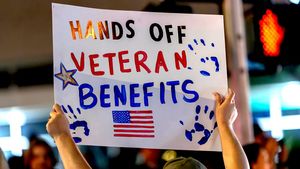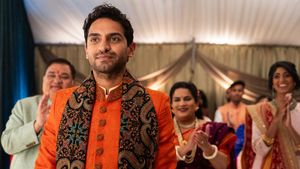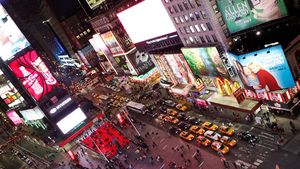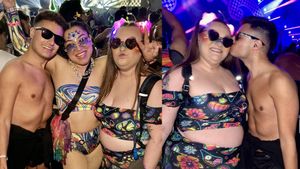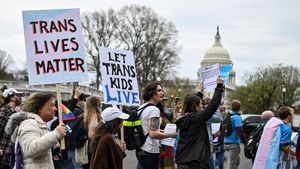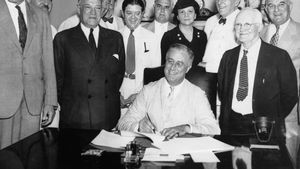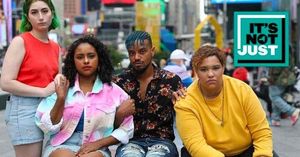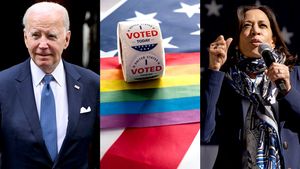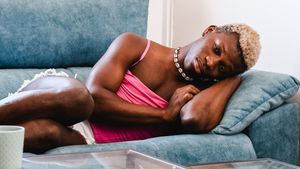One of the biggest stories to come out of the currently ongoing Paris 2024 Olympics has been that of Algerian boxer Imane Khelif.
Khelif, who participated in the Tokyo Olympics in 2021 with no issue, is facing a myriad of hate and bigotry for competing in the women's division of boxing in the Olympic games while having failed an unspecified gender eligibility test from a disgraced boxing association in 2023.
While Khelif doesn't identify as intersex, she reportedly was born with differences of sexual development (DSDs for short), causing her to fail the aforementioned gender test. The details of the test, and how she failed it, have not been released, but, Umar Kremlev, the current Russian president of the International Boxing Association (IBA) said the test "proved (Khelif) had XY chromosomes."
What is a DSD?
Differences in sex development is a newer term for intersex conditions that the UK's National Health Service defines as "a group of rare conditions involving genes, hormones, and reproductive organs, including genitals. It means a person's sex development is different to most other people's."
There is debate within the intersex community as to which term is preferred. When DSD was coined at a 2005 medical conference, it stood for "disorders of sex development," which has been widely rejected by the community.
Many intersex people say that the word "disorder" is inaccurate and pathologized people born with intersex conditions, and over time, "disorder" was changed to "difference." Still, the term is not used by everyone in the intersex community.
What types of DSDs are there?
There are many different types of DSDs that people can be born with or can develop in childhood.
One example is having XX chromosomes (which cis women usually have) with genitals that look different from most women's genitals. This can include having a more developed clitoris that resembles a penis and a closed vagina.
Another is having XY chromosomes (which are usually seen in males), but having external genitals that develop in the typical female way. These people may have a womb and/or testicles that may or may not work.
Others have only one X chromosome (XO) or may have an extra one (XXY) that leads to differences in sexual development as the person ages. This can include boys not producing as much testosterone on average, or girls not getting a period, being shorter than average, or being infertile.
Still more examples include Androgen Insensitivity Syndrome, where a baby born with XY chromosomes and testes is unable to respond to androgens including testosterone; Hypospadias and Epispadias, where the urethra is located below or above (respectively) the usual position on the tip of the penis; and Ovotesticular DSD, where instead of ovaries or testes, a baby develops ovotestis which have some ovary-type cells and and some testis-type cells. (This is not an exhaustive list of intersex conditions or traits.)
How common are DSDs?
According to InterACT, an advocacy organization that represents intersex youth, about 1.7 percent of people are born intersex. Being intersex and having DSDs are naturally occurring variations in humans and are not a sign that anything is wrong.
What is intersex surgery?
When they are born, many intersex infants are subjected to non-lifesaving surgical procedures meant to make their genitals or gonads seem more "normal." This can include "reducing" or "repositioning" a clitoris, creating or altering a vagina, moving an already-working urethra, or removing sex-producing gonads.
Most of these surgeries are done on babies under two years old, and many can have serious lifelong medical consequences, including reduced sexual function, high complication rates, and mental issues.
How is being intersex different from being transgender?
Being transgender is identifying as a gender other than the one you were assigned at birth. The vast majority of intersex people identify as the gender they were assigned at birth, making them exactly as cisgender as J.K. Rowling.
If an intersex person does decide to change genders, then they would be transgender.
What does the International Olympic Committee say about athletes with DSDs?
The IOC Framework on Fairness states that "everyone regardless of their gender identity, expression and/or sex variations should be able to participate in sport safely and without prejudice."
Additionally, the IOC says, "All athletes participating in the boxing tournament of the Olympic Games Paris 2024 comply with the competition’s eligibility and entry regulations, as well as all applicable medical regulations set by the Paris 2024 Boxing Unit (PBU). As with previous Olympic boxing competitions, the gender and age of the athletes are based on their passport."









